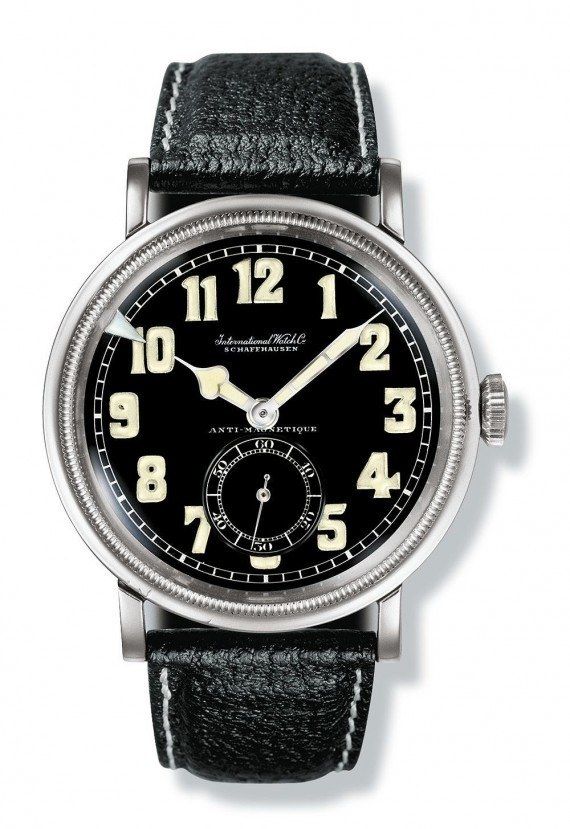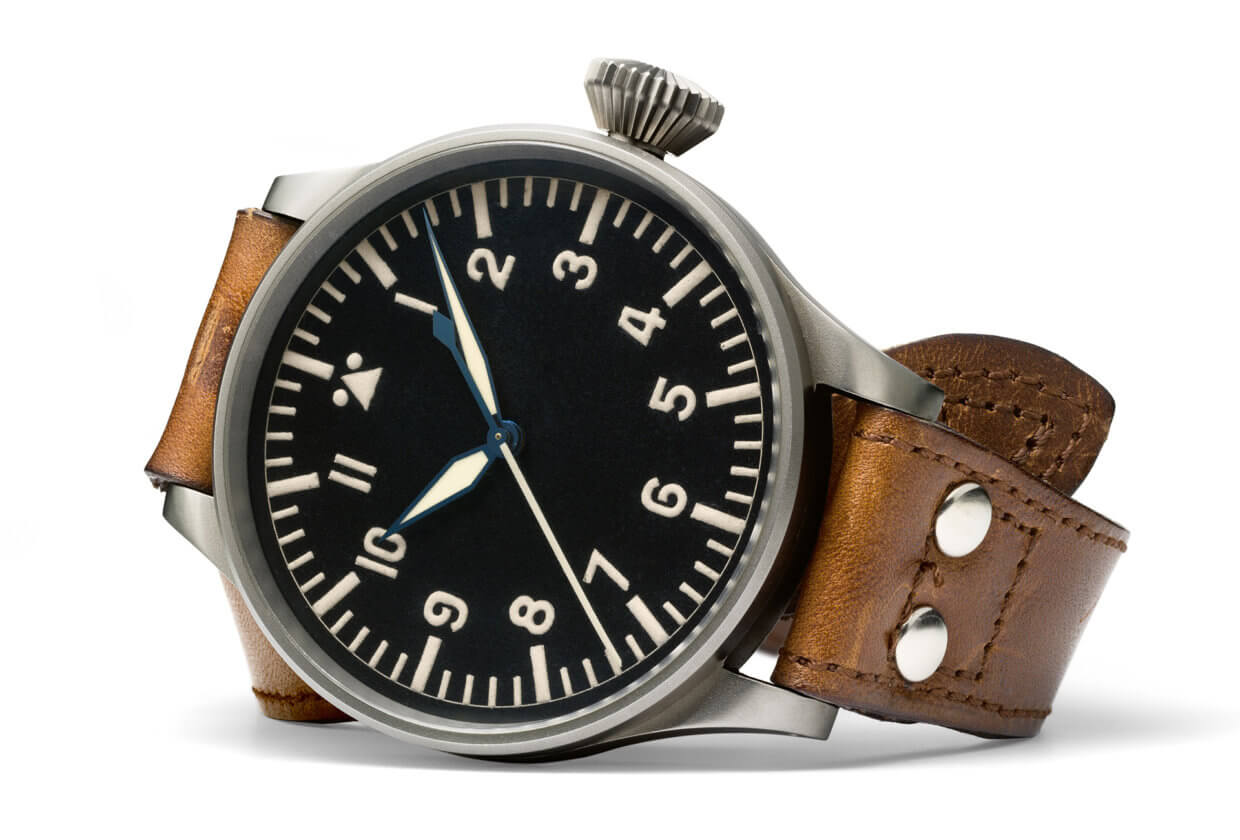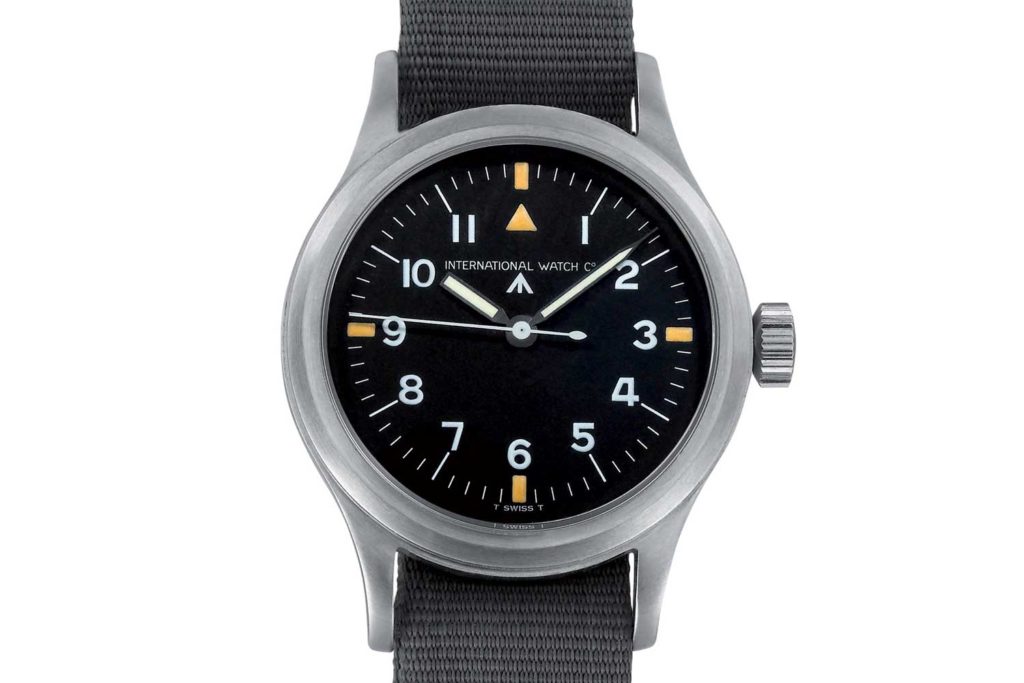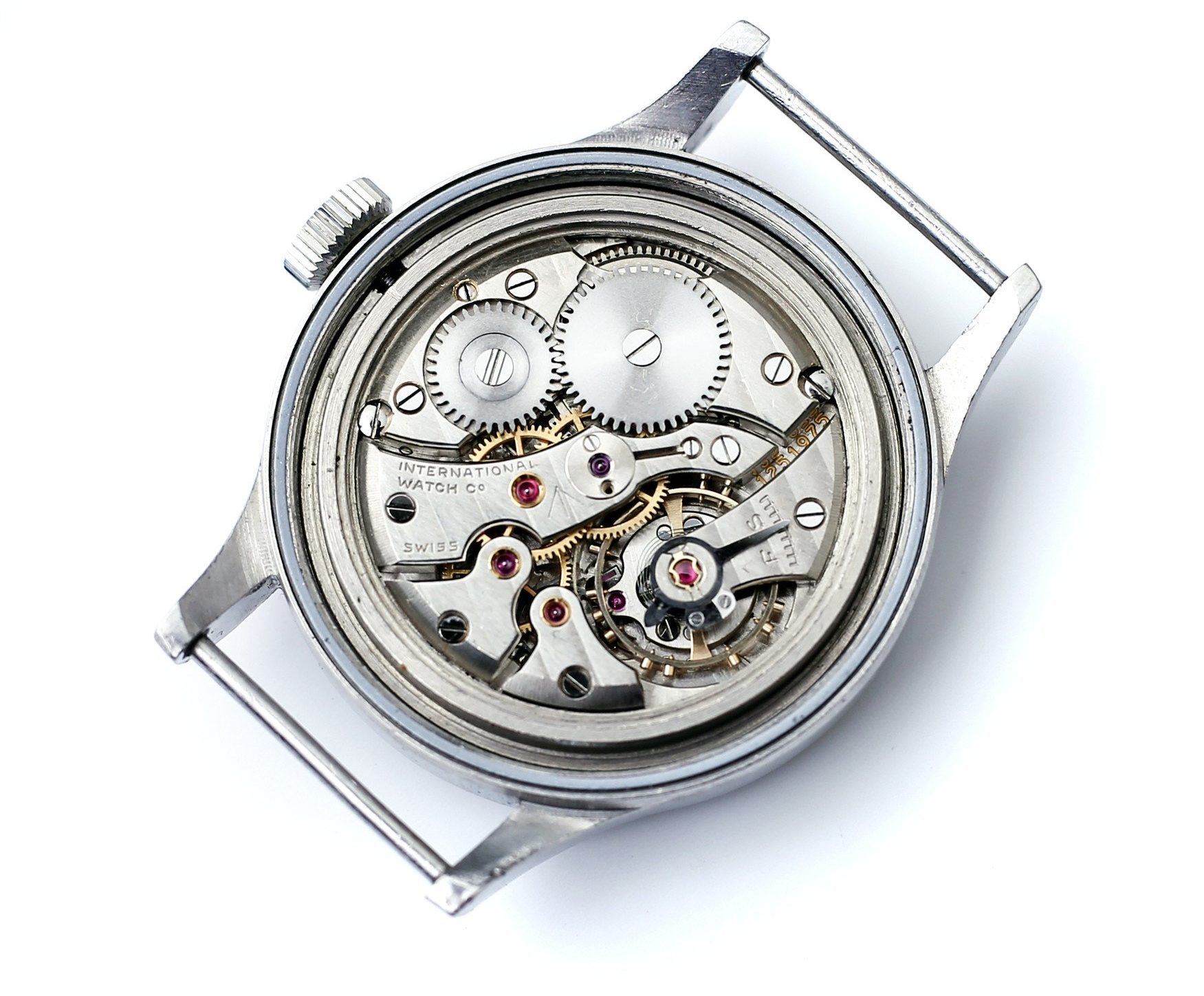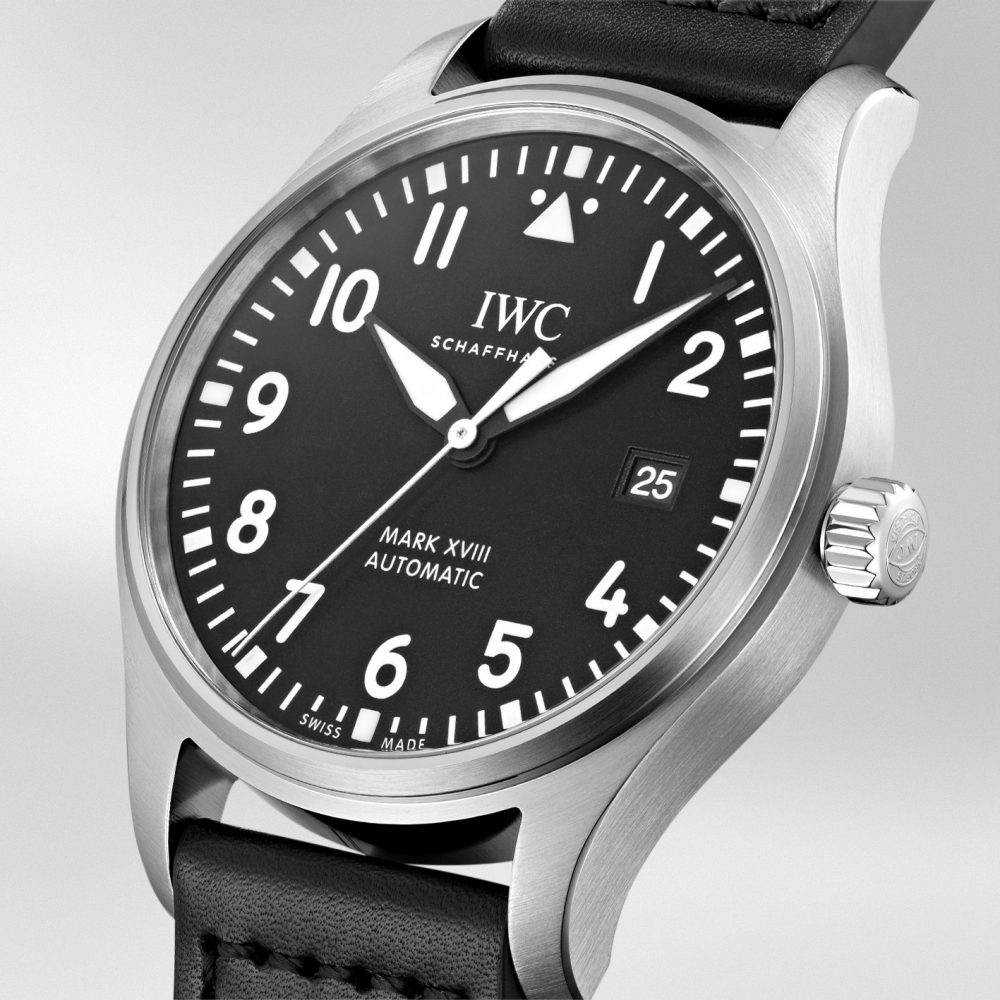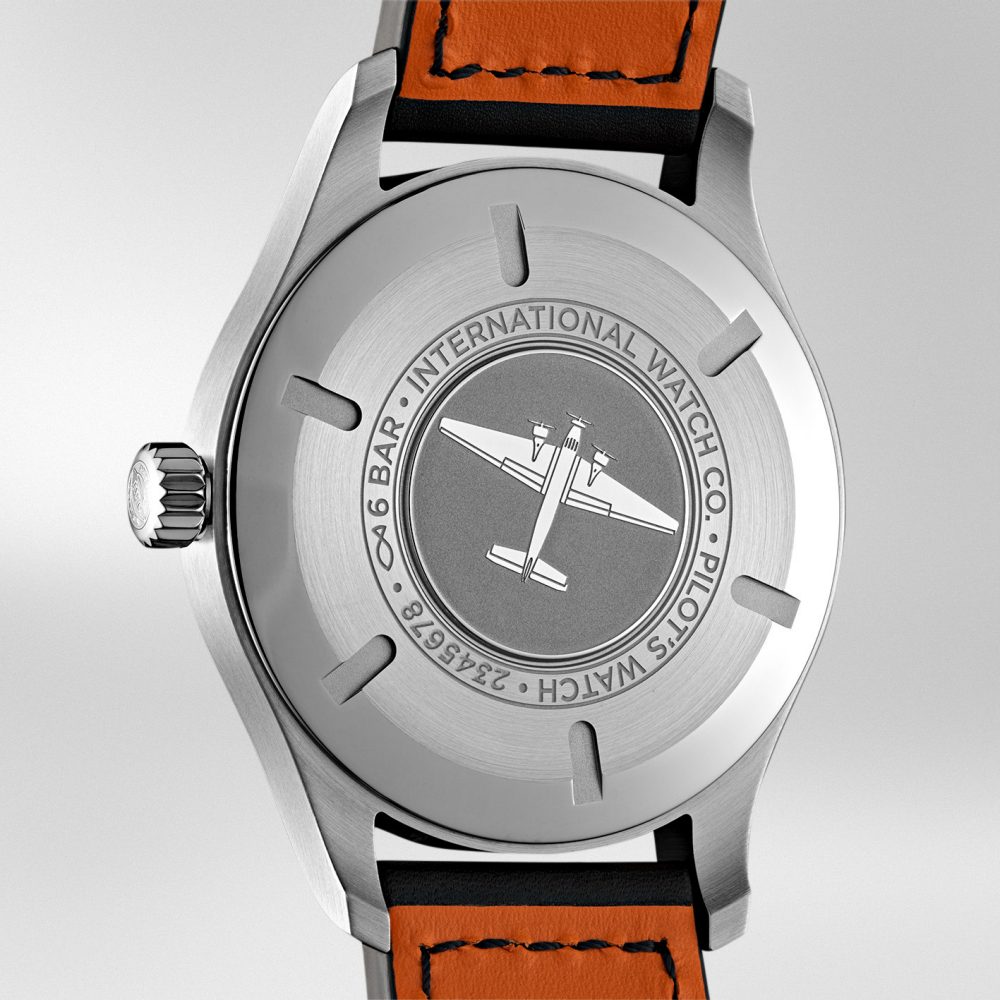This is the IWC Pilot’s Watch Mark XVIII Ref IW327009. The modern-day interpretation of IWC’s classic Mark 11. As the name suggests, it’s a pilot’s watch. And a great one at that. Clean design. Legible dial. And a distinct, aviation-inspired aesthetic. It’s the closest thing in the current collection to the original Mark XI from 1948. With some obvious updates of course. Yes, the Mark XVIII Ref IW327009 is a good pilot’s watch. But is it the best?
A (Very) Brief History Of The IWC Pilot’s Watch
For a good part of its 150-plus year history IWC has been associated with pilot watches. The company produced its first such model in 1936. Schaffhausen industrialist Ernst Jakob Homberger was running IWC at the time. But it was his two sons, Hans Ernst and Rudolf, who came up with the idea for the company’s first pilot’s watch. Both were avid aviation enthusiasts. Seeing an opportunity in the market, they brought the concept to their father.
This first model was called “Spezialuhr für Flieger”. Which translates to “Special clock for Aviators”. Although IWC prefers the name; “Special Pilot’s Watch”. Which does have a better ring to it. The design is recognisable, even today. Large and luminous Arabic numerals. Cathedral-style hands. And running seconds shown on a sub-dial at 6 o’clock.
- The IWC Special Pilot’s Watch circa 1936.
A rotating bezel with a luminous arrowhead allowed wearers to register take-off time. Important to know if you only have enough fuel to last a certain period of time.
Providing the power was the manual-wind Calibre 83. Complete with an anti-magnetic escapement. This was a robust movement inside a robust watch. And it needed to be. Conditions inside an airplane cockpit at the time were less than pleasant. Especially with regards to temperature. There was no heating to speak of. So, the watch needed to be resistant to the cold. According to IWC, it could withstand variations in temperature of between -40 and +40°C.
Next came the Big Pilot’s Watch 52 T.S.C. At 55mm across x 16.5mm high, it weighed in at a hefty 183 grams. The design of the dial comes from cockpit instruments of the time. A defining feature is the triangular marker with a single dot on either side at 12 o’clock. This marking is still found on IWC pilot’s watch today. It allows pilots to orient the position of the hands on the dial.
- The larger than life IWC Big Pilot’s Watch 52 T.S.C
A large conical crown on the side of the case enabled easy operation. Even with bulky flying gloves on. In 1940, a thousand pieces were produced for the Luftwaffe. Over the decades this model has evolved into the Big Pilot’s watch.
Even more famous though, is the model that came next.
The IWC Mark XI Navigator’s Wrist Watch
IWC developed the Mark XI in response to a tender issued by the British Government. As a member of the so-called ‘Dirty Dozen’, it had already produced its first W.W.W. watch for the British Army several years earlier. Now, the Royal Air Force needed a service watch for its pilots. Specifically, RAF navigators performing dead reckoning calculations.
The MoD’s requirements read like the spec sheet for the modern-day Mark XVIII. The watch needed to have:
- a highly accurate movement with hacking function;
- an inner soft iron cage to protect the movement from magnetic interference;
- a stainless steel waterproof case;
- a screwed ring to protect the crystal from sudden drops in pressure; and,
- a black dial with luminous hands.
It also needed to survive a 44-day testing period. Followed by assessment at the chronometer workshop of the Royal Observatory. Watches from active units were sent there periodically for maintenance too. The tests involved a 14-day period rating the watch’s performance in 5 positions. And at least two temperatures. The antimagnetic and waterproof properties of each piece were also checked. These evaluations were carried out every 12 months.
- The legendary IWC Mark XI.
Despite the extreme testing regime, the IWC Mark XI was not some rugged beast. The steel case measured 36mm in diameter. The black dial had three contrasting luminous hands in white. (No date display. That didn’t come until later models). Arabic numerals denoted the hours. Except at 12 o’clock, where the triangular marker appeared instead. Underneath it was the MoD’s Broad Arrow or “Crow’s Foot” symbol.
Inside was the manual-wind IWC calibre 89. Developed by IWC’s Technical Director, Albert Pellaton, in 1946. To this day it is still lauded as one of the best mechanical movements ever made. Not the most complex. But one that it extremely fit for purpose. Beating at a rate of 18,000 vph it was renowned for its precision and reliability. And, of course, it satisfied all the MoD’s criteria. If you would like to know more about this movement, read this.
- A Cal 89 in an IWC Mark XI (RAF-issued) ‘Hooked 7’ – Credit: A Collected Man.
The Mark XI remained in use for the next 30 years. With production stopping in 1981. IWC later revived the series in 1993 with the Mark XII. Subsequent evolutions followed. Leading us to the Mark XVIII, introduced in 2016.
IWC Pilot’s Watch Mark XVIII
For many pilot watch lovers, the Mark XVIII is as good as it gets. In previous iterations IWC deviated somewhat from the pure design of the Mark XI. The Mark XVIII fixes much of that. The steel case is a very wearable 40mm x 11mm. And is waterproof to 6 bar. Or 60 metres. So probably best not to go swimming with it. It’s also available in a 36mm case for purists (ref IW324010).
The black dial features luminous white Arabic numerals for the hours. Including at ‘6’ and ‘9’. These were left off the previous Mark XVII. Best of all, the triple date window is gone. Replaced by a single aperture instead. Again, in line with the design of the original.
The luminous flieger hands are adopted from the Big Pilot’s watch. Though this change happened back in 2006 with the Mark XVI. I prefer them to the original hands if I’m being honest. They suit the larger case and overall aviation theme. At 12 o’clock is the familiar triangle marker with two dots.
Inside is the automatic calibre 35111. It’s not a manufacture movement, although IWC is a manufacturer. Instead it uses an ETA base. This may change in the future though. IWC does seem to be introducing more in-house movements across its collections.
Beating at a standard 4hz, it offers 42 hours of power reserve. It’s protected against magnetic fields by a soft-iron inner case. Likewise, the sapphire glass secured against displacement by drops in air pressure. The movement is hidden by a solid caseback. Its engraved with an image of a Ju-52 airplane. The same plane whose cockpit instruments inspired the original dial design.
This version is worn on a black calfskin strap by Santoni. Retail price of the IWC Mark XVIII Ref IW327009 is GBP 3,890.
Is It The Best Pilot’s Watch?
Very few people would dispute the heritage of the Mark XVIII. Like its forbearer, its practical, functional and reliable. But is it the best pilot’s watch? This is a question with no clear answer. There is a lot of competition. Like a lot. From the Breitling Navitimer. To the Rolex GMT-Master II. To the Zenith Pilot Type 20. And many, many others.
It’s a matter of personal preference. Budget considerations also come into play. As does availability. The Mark VXIII Ref IW327009 is a popular watch sure. But there’s no outrageous waiting list for it. This is a great looking, practical watch that you can wear right now. For reasonably little money (relatively speaking). There’s a lot to like about that.
Technical Specifications: IWC Mark XVIII Ref IW327009
- Case: Steel – 40mm x 11.2mm – screw-in crown – waterproof to 6 bar / 60 metres.
- Dial: Black – white Arabic numerals for hours – date at 3 o’clock – luminescent markers and hands – sapphire glass, convex, antireflective coating on both sides.
- Movement: Calibre 35111 – self-winding – 4hz – 42-hour power reserve – centre hour, minute and seconds hands – date – hacking seconds for precise time setting – soft-iron inner case for protection against magnetic fields.
- Price: GBP 3,890.
This article by TheWatchLounge has been sponsored by our partner WatchBox.
